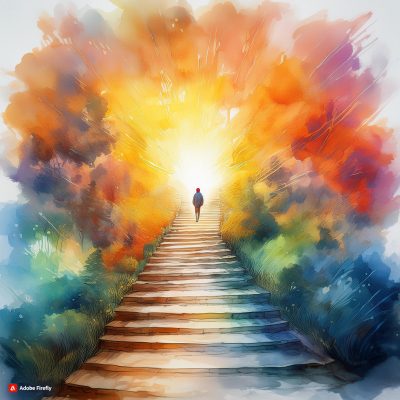 I never set out to “be” a psychopomp. I didn’t even know the word for it at first. I simply found myself, again and again, in moments where a soul needed assistance at final passage—or when someone grieving needed reassurance that their loved one’s journey into the light had been met with grace.
I never set out to “be” a psychopomp. I didn’t even know the word for it at first. I simply found myself, again and again, in moments where a soul needed assistance at final passage—or when someone grieving needed reassurance that their loved one’s journey into the light had been met with grace.
Only later did I realize this gift had a name. And even then, I knew it wasn’t part of my professional résumé. This is not work I advertise or charge for. It happens quietly, through people who know me or who come through trusted referrals. It is something I am called to do, something I am gifted to do, but not something I offer as a “service.”
What I Understand a Psychopomp to Be
Across spiritual traditions, a psychopomp is a guide who helps souls cross thresholds—sometimes into the underworld, sometimes into the light. In Jungian psychology, the psychopomp is an archetype that mediates between the conscious and unconscious, often appearing in dreams or visions as an animal, ancestor, deity, or wise guide.
My work does not involve underworld journeys. I remain in the light—attuned to the upper realms, often accompanied by Goddess Diana, guardian of thresholds, forests, and sacred sovereignty. I see my role as offering intuitive companionship through the liminal, ensuring the soul’s crossing is met with clarity, care, and grace.
The Huna tradition speaks of the aumakua—an ancestral guide who connects individuals to their higher self and assists in spiritual transitions. In a similar way, I act as a bridge: not leading, but walking alongside, honoring the sovereignty of the soul as it makes its own way home.
How I Came to Do This Work
I only realized I had been “doing” psychopomp work after several experiences followed the same rhythm.
Sometimes the request comes because a loved one held very rigid religious beliefs about death, and those left behind are struggling to reconcile them. Other times, the person was spiritual but not religious—or avoided speaking of death altogether. The work is often as much for the living as it is for the one who has crossed.
My Rhythm and Process
Once I know we will meet, the work begins. In the time before the session, I open to the “thin veil” of the loved one’s presence. This can bring through images, songs, sensations, or impressions.
Shortly before our time together, I spend 20–30 minutes in quiet ritual—a blend of prayer and energy work—to prepare the space. The second half is conversation: sometimes sharing what I’ve received, sometimes simply holding space for the mourner’s story, questions, or search for meaning.
For Fellow Practitioners
I share this not as a lived example for those who also carry gifts outside services they may offer within their professional domain. Many intuitive practitioners will recognize these moments—when you are called to show up in ways you can’t credential or market, yet they remain among the most meaningful acts of service you offer.
This is what psychopomp work looks like for me. If you feel a similar call, you may find your own rhythm, your own way of walking with the dying or the dead, your own way of carrying light across the threshold.





